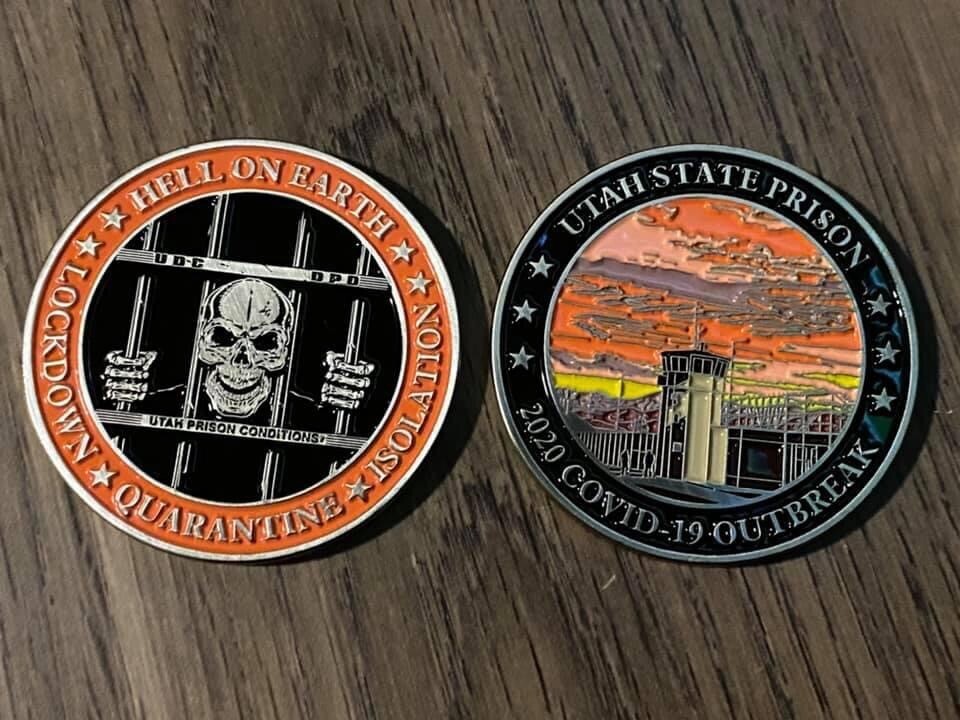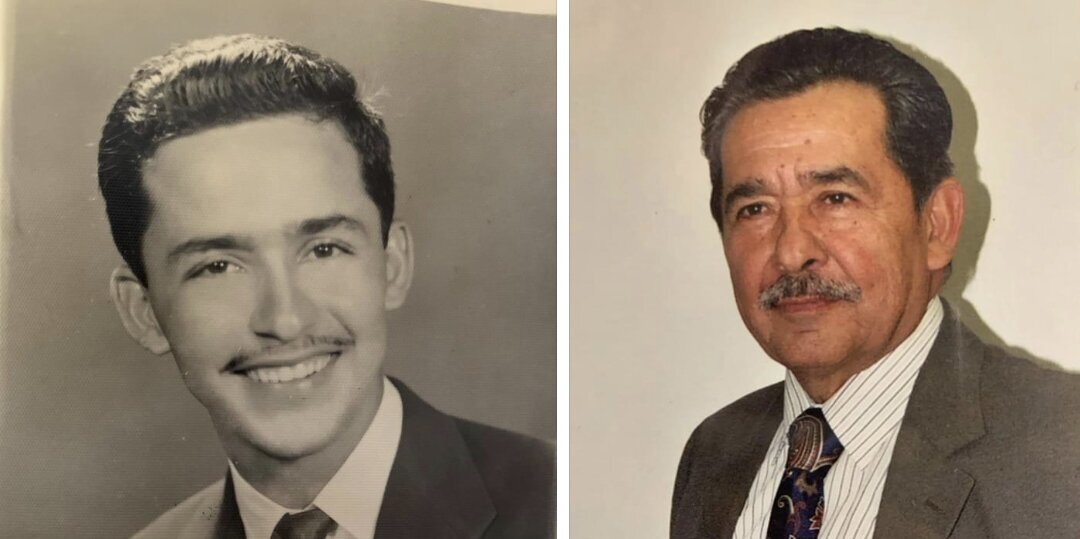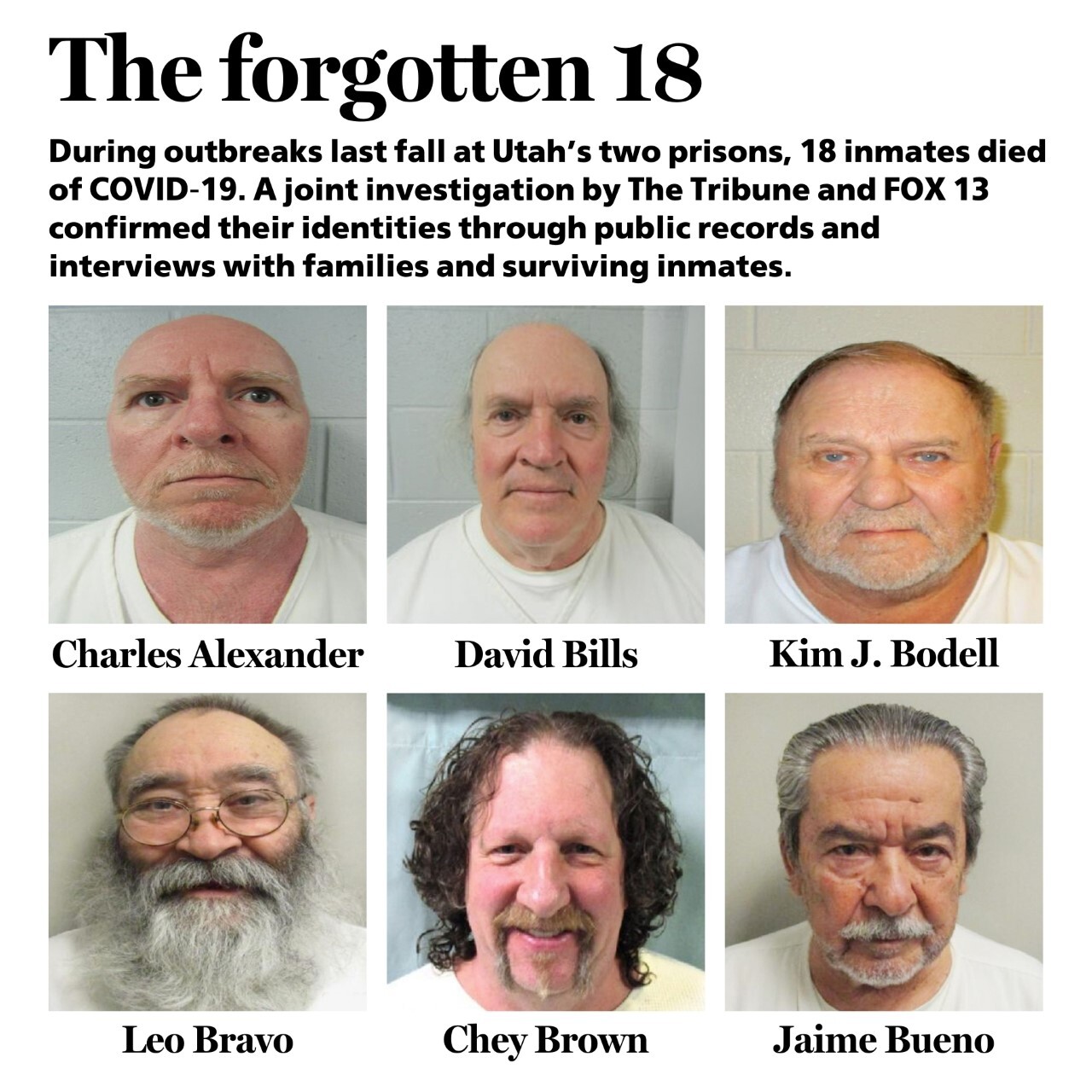DRAPER, Utah — The voice Brandy Gillespie heard on the phone sounded strained.
It was her husband, who was incarcerated at the Utah State Prison, and it sounded like he had just finished running a marathon.
“I can’t breathe,” she recalled Jerry Gillespie telling her on Nov. 4. “I think I’m dying. I don’t want you to scare the kids, but I can’t hold my balance. I have to walk against the wall. The inmates have to help with the bathroom.”
They usually talked three times a day, though that was spotty during the pandemic as lockdowns came and went.
But after that panicked Nov. 4 call, she didn’t hear from him the next day or the day after that. More than a week went by — and she didn’t get a call.
Brandy exchanged emails with the prison clinical services director, asking him if her husband had COVID-19. Director Tony Washington said no, but he told her Jerry had been moved to the infirmary as a precaution because the coronavirus had started quickly moving through Oquirrh 5, the housing unit where Jerry Gillespie stayed.
Jerry Gillespie’s heart and lungs had been failing him before the pandemic. He was terminally ill at age 48 and incarcerated for up to five years for assault and unlawful weapons possession.
“He is checked on daily and reported today not having any further needs at this time,” Washington wrote Nov. 13. “We have no medical
indicator of him being in the condition you described. To summarize, he was doing well today, and I hope that alleviates your concerns.”
Jerry Gillespie did have the coronavirus.
He was hospitalized for it, though no one told his wife.
He died Nov. 25.

He was one of 18 prisoners who succumbed to the coronavirus during outbreaks last fall at Utah’s two prisons, where just over 4,000 people were incarcerated.
People in Utah’s prisons were five times more likely to die of COVID-19 than the average Utahn, according to an analysis by The Salt Lake Tribune and FOX 13. The virus hit the men’s population the hardest, though some women were also infected. None of the women died.
The Utah Department of Corrections has not disclosed the names of the 18 men who died of the coronavirus. A joint investigation by The Tribune and FOX 13 confirmed their identities through public records and interviews with families and surviving inmates. The news organizations also uncovered concerns about medical care and the information given to families during an outbreak that would eventually infect nearly half those incarcerated in the Draper prison and 30% of the inmates in Gunnison.
FOX 13 investigative reporter Nate Carlisle discusses his story on the large number of inmate deaths
Death in Oquirrh 5
David Bills wrote a short letter to his wife Nov. 15, his handwriting a messy scrawl.
He, too, was in Oquirrh 5, serving up to life in prison for child sex abuse — though he maintained his innocence and was appealing his conviction.
He told his wife he was so sick he needed help sitting up.
“I am getting worse,” he scribbled. “I can’t breath[e]. I’m running a 104 degree temp.
“We had another one die yesterday and one more removal to the infirmary. I’m not going there. They chain you to a filthy bed and let you piss all over yourself.”
Bills died in a hospital eight days later. He was 70. Penitentiaries across the country had raging and deadly coronavirus outbreaks last year, mostly at the beginning in the pandemic. The outbreaks at Utah’s prisons, however, occurred relatively late. The virus first crept into the Draper prison in September, likely through a dental health care provider who treated several inmates. Case counts soon exploded, and men started dying.
Emails exchanged between Utah health officials said the virus was likely spreading between units through staffers. At some point, as case numbers were high in the community, the virus got into the smaller Gunnison facility as well.
The 18 died during a three-month period starting in early November. At least a third lived in Oquirrh 5, the housing unit where the older and most medically vulnerable inmates live.
Patrick Nacey also lived there at that time, but he said he never got COVID-19. In a phone call from the prison, he said he saw people sick and dying around him.
He remembered one of his friends, Stephen Walker, tried to get medical help for days. By the time someone came to check his oxygen levels, Nacey said, Walker’s fingers had turned blue.
“I was more worried about my friends and who was going to be next,” he said. “It was kind of like we were guinea pigs in there. They would move one person out that had tested positive and move him to a different dorm. They just moved us all over the place.”

That constant movement concerned the American Civil Liberties Union of Utah. Sara Wolovick, an ACLU Equal Justice Works fellow, said the prison used rapid tests to determine who was positive and grouped them together. Those who were negative were also mixed.
“That was a huge failure,” she said. “They would take people who were exposed but had tested negative and consolidate them with individuals who were exposed and negative from other housing units. And the problem is that these rapid tests did have substantial false negative rates. And the [Centers for Disease Control and Prevention] was not recommending this type of moving people around.”
Prison officials say they have been using nasal rapid tests that were “very accurate” but noted that, up until recently, the most accurate tests available to them had to be sent off-site, and results took up to three days to get back. Those were most accurate for asymptomatic cases, according to spokeswoman Kaitlin Felsted, while the rapid tests tended to work for people who had symptoms.
Challenge coins
Mike Haddon was the executive director of the Department of Corrections at the start of the pandemic; he left in November to lead the Utah Board of Pardons and Parole.
He declined an interview request from The Tribune and FOX 13.
Brian Nielson is the current executive director. He wouldn’t talk about individual cases, but he said administrators reviewed letters describing the conditions in Oquirrh 5 and found “discrepancies” between what the inmates describe and what actually happened.
“From the reviews I’ve seen,” he said, “there was adequate and appropriate care given.”
He said there have been several reviews of the prison’s handling of the outbreak by Utah health officials, which have been mostly complementary.
“The Department of Corrections followed best practices,” he said. “They followed CDC guidelines.”
Nielson said he hasn’t seen any effort from prison officials to deceive family members of those incarcerated or downplay the severity of the outbreak.
Nielson attributes a high vaccine rate among prisoners and staffers, though no one is required to receive the shots, for the inmate deaths stopping in January.
That changed Friday, when corrections officials announced another inmate died of the coronavirus. The man was 43 and had been in the Sanpete County jail as part of a program in which the state contracts with county jails to house inmates. He died at a hospital.
About 45% of inmates at the Sanpete County jail have tested positive, according to prison officials. And the virus is back at the Draper facility, too. Corrections officials said they started mass testing last week after prisoners tested positive in two housing units.
The outbreaks have been hard on the staff as well, Nielson said. Corrections data showed that at the Draper facility alone, staffers worked more than 81,000 combined hours of overtime between late September through February. Many got sick themselves. None died.
A group of officers at the Draper prison purchased specially made “challenge coins” in October. The small medallions, which are popular in law enforcement, described working at the prison during the pandemic as “hell on earth.” One side features the Draper facility at sunset. The other side is a skeleton behind bars.

Brandy Gillespie called the coins “disgusting” and said it felt like the guards were mocking those, like her husband, who died.
“They got to go home to their families,” she said. “They got to choose to be there.”
Nielson said the coins weren’t sanctioned by the department and were paid for by the officers. He didn’t defend the medallions, saying that people could be offended even if the guards’ were not intending to mock inmates.
“My perception was different than their intent,” he said. “But I also know the difficult conditions they went through.”
Learning from tragedy

Some families whose loved ones died of COVID-19 want an independent investigation.
That includes the family of Jaime Bueno Vasquez, who died in December at age 86. He was serving up to life in prison for child sex abuse.
His children say they struggled to get information about their father. In the weeks before his death, Bueno Vasquez was coughing, then lost his sense of taste and smell.
Nahir Strout, his daughter, said they didn’t know their father had tested positive for COVID-19 and was in a hospital until a nurse called to tell them he had two hours to live.
They spoke with their dad on a video call and said their goodbyes.
He didn’t die that day. He stabilized, Strout said, and was released back to the prison. But he died 10 days later.
“Not everybody that is there deserves to die,” Strout said. “And the people that are in these jails are serving a time sentence, not a life sentence.”
Brandy Gillespie said she received letters from other inmates that backed up things her husband told her — including concerns that corrections officials moved inmates who had been exposed but had rapid-tested negative into housing blocks where the virus hadn’t spread yet.
“That was the worst thing they could have done,” she said.
Sen. Todd Weiler, R-Woods Cross, leads the Senate committee that oversees the Department of Corrections and the parole board. He said he’d be open to launching the investigation the families want.
“Whenever we have a death in the prison, that warrants investigation,” he said. “[Most] of them have not received life sentences. So if they’re dying in prisons or in jails in Utah, as a legislator, I think every one of those should be investigated, and we should try to learn.”
Weiler said he was never briefed on the prison outbreaks, though he wished he would have been. He also said he’s not sure prison officials did anything wrong.
“I’m not going to assume there was a mistake, because people are getting COVID inside the prison and outside the prison,” he said. “People are dying of COVID inside the prison and outside of the prison. But if there was a mistake, then we should certainly learn from those mistakes.”
Brandy Gillespie said the department clearly made a mistake with her husband and how officials failed to communicate with her.
“They took my kids’ opportunity away to talk to their dad,” she said. “They took that away by saying he was fine when he wasn’t.”
She plans to sue the Corrections Department on behalf of her and the six children she and her late husband shared. She said she was especially upset that it wasn’t a prison employee who told her first that her husband had COVID-19.
It was another prisoner, who wrote a letter Nov. 11.
“Most unfortunately, Jerry tested positive for COVID-19 sometime real early Saturday morning,” Kenneth Nelson wrote.
Nelson talked to The Tribune recently and recalled the night Gillespie was taken out of the prison.
“I see he was having trouble walking,” Nelson said, his voice breaking with emotion. “I asked him five, maybe seven, times, if he wanted help to his dorm room. He said, ‘No. No. I got it. I’m fine. I’ll make it.’”
That night, prison staff wheeled Jerry Gillespie out of the room and took him to the hospital. Nelson never saw him again.





